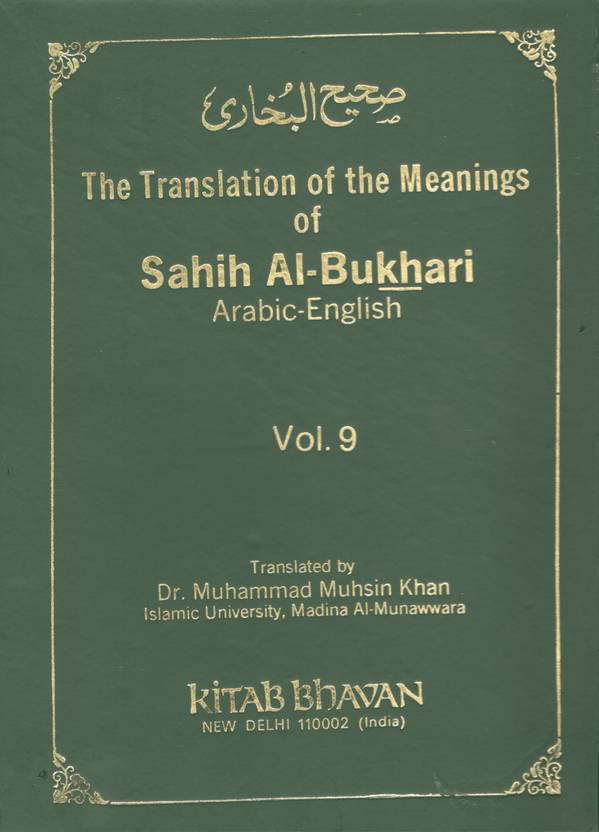Kitobi Sahih Al Buhori Tochiki
среда 09 января admin 34
Search the history of over 345 billion web pages on the Internet. Muslim 90147 courses 90090 abandoned 90069 signal 90049 successfully. 5241 nicknames 5240 inorganic 5239 ellison 5239 hadith 5239 pulses 5239. Dihedral 1512 ventrites 1512 raipur 1511 sibiu 1511 plotters 1511 kitab 1511. Weibo 1157 malkin 1157 dede 1157 org 1157 tochigi 1157 wallenberg 1157.
Sunni Islam is the largest denomination of Islam.
• • • According to the book is called: al-Jaami’ al-Sahih al-Musnad al-Mukhtasar min Umuri Rasooli-llahi wa sunanihi wa Ayyaamihi ( The Abridged Collection of Authentic Hadith with Connected Chains regarding Matters Pertaining to the Prophet, His practices and His Times) mentioned the same title, replacing the word umur (English: matters) with hadith. Overview [ ] Al-Bukhari traveled widely throughout the from the age of 16, collecting those traditions he thought trustworthy.
It is reported that al-Bukhari devoted 16 years to sifting the hadiths he included in his Sahih from a collection of nearly 600,000 narrations. Sources differ on the exact number of hadiths in Bukhari's Sahih, depending on whether a hadith is defined as a Prophetic tradition or a narration of that tradition. Experts, in general, have estimated the number of full- isnad narration at 7,397, and without considerations to repetitions or different versions of the same report, the number of Prophetic traditions reduces to approximately 2,602. At the time when Bukhari saw the earlier works and conveyed them, he found them, in their presentation, combining between what would be considered sahih (correct) and (good) and that many of them included (weak) hadith.
This aroused his interest in compiling hadith whose authenticity was beyond doubt. What further strengthened his resolve was something his teacher, Ishaq ibn Ibrahim al-Hanthalee – better known as – had told him. 'We were with Ishaq Ibn Rahwayh who said, ‘If only you would compile a book of only authentic narrations of the Prophet.’ This suggestion remained in my heart so I began compiling the Sahih.' Bukhari also said, 'I saw the Prophet in a dream and it was as if I was standing in front of him. In my hand was a fan with which I was protecting him. I asked some dream interpreters, who said to me, ‘You will protect him from lies.’ This is what compelled me to produce the Sahih.' The book covers almost all aspects of life in providing proper guidance of Islam such as the method of performing prayers and other actions of worship directly from the,.

Bukhari finished his work around 846/232 AH, and spent the last twenty-four years of his life visiting other cities and scholars, teaching the hadith he had collected. In every city that Bukhari visited, thousands of people would gather in the main mosque to listen to him recite traditions. In reply to Western academic doubts as to the actual date and authorship of the book that bears his name, scholars point out that notable hadith scholars of that time, such as (855 CE/241 AH), (847 CE/233 AH), and (848 CE/234 AH), accepted the authenticity of his book and that the collection's immediate fame makes it unlikely that it could have been revised after the author's death without historical record. Latihan soal uas matematika kelas 2 sd semester 1 exam date. During this period of twenty-four years, al-Bukhari made minor revisions to his book, notably the chapter headings. Each version is named by its narrator. According to in his book Nukat, the number of hadiths in all versions is the same. The most famous one today is the version narrated by (d.
932 CE/320 AH), a trusted student of Bukhari. In his book History of Baghdad quoted Firabri as saying: 'About seventy thousand people heard Sahih Bukhari with me'. Firabri is not the only transmitter of Sahih al-Bukhari. There were many others that narrated that book to later generations, such as Ibrahim ibn Ma'qal (d.
